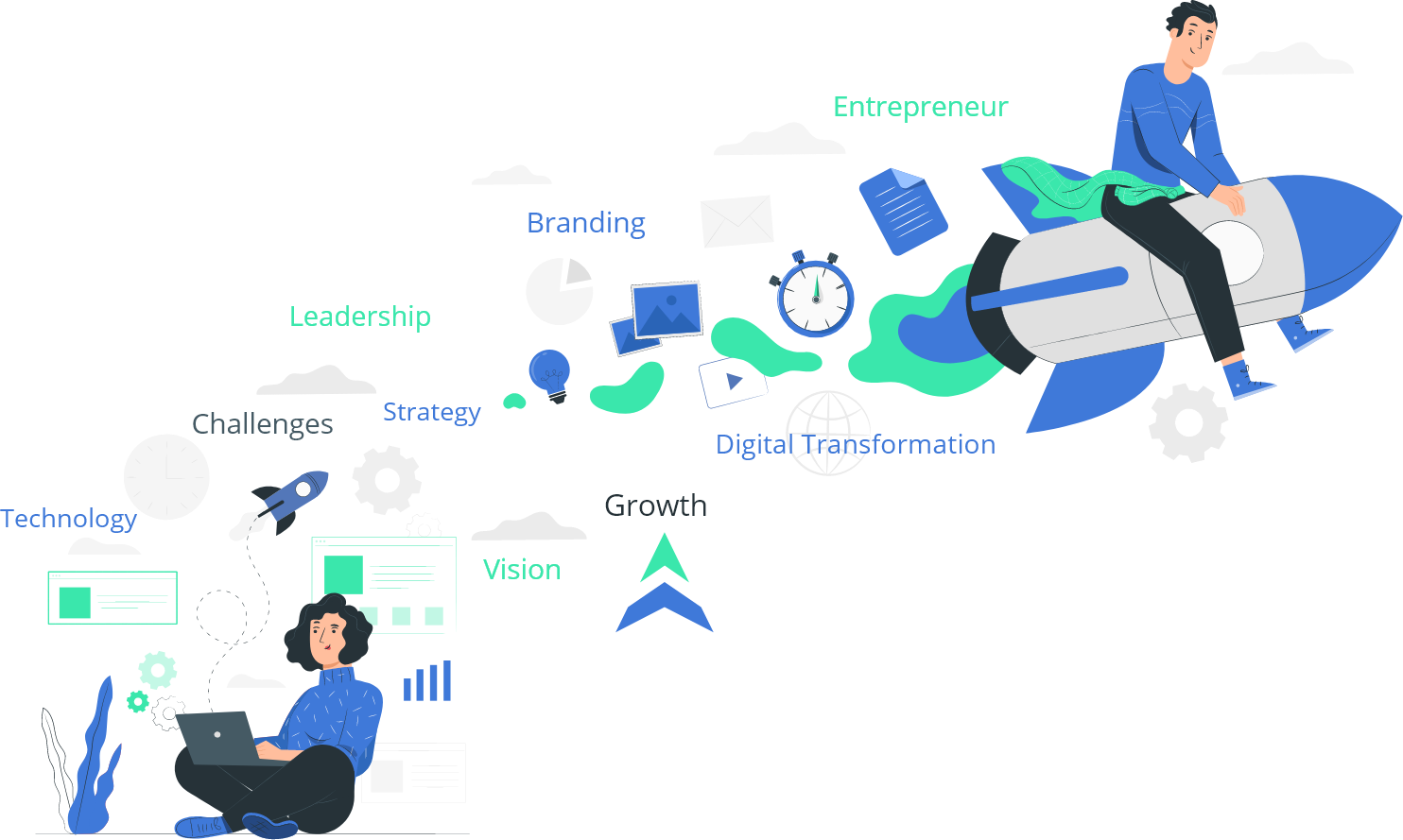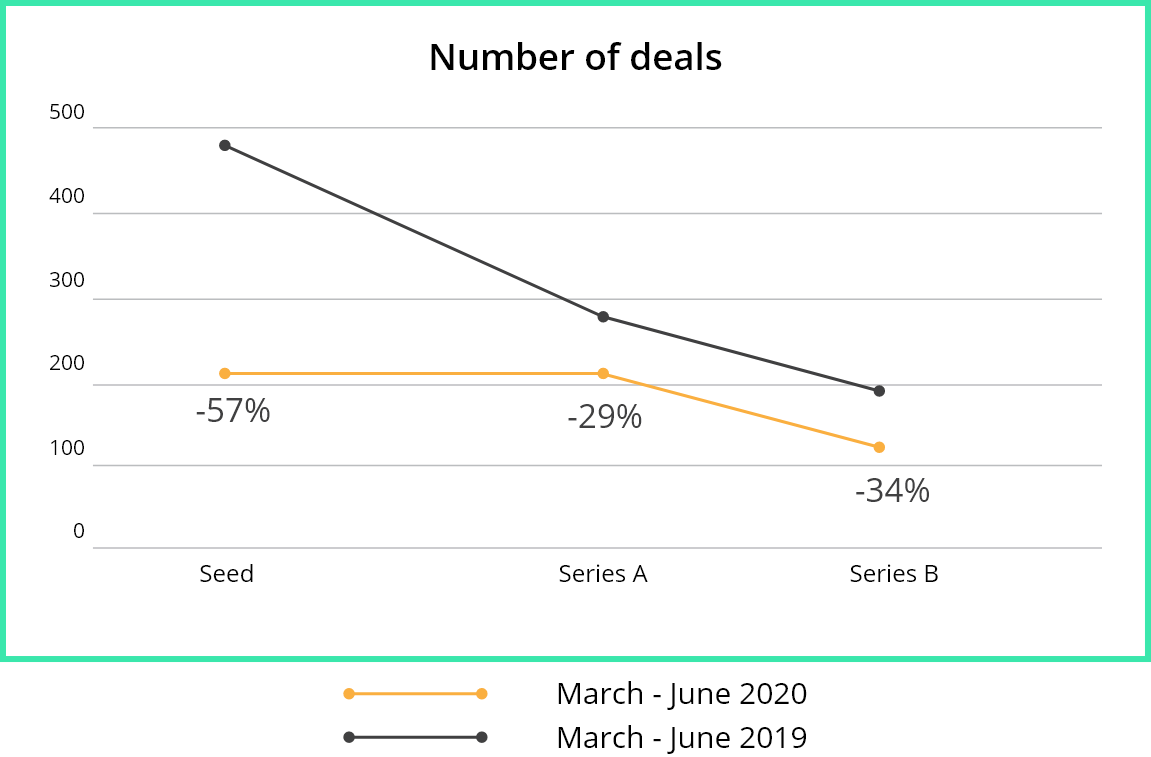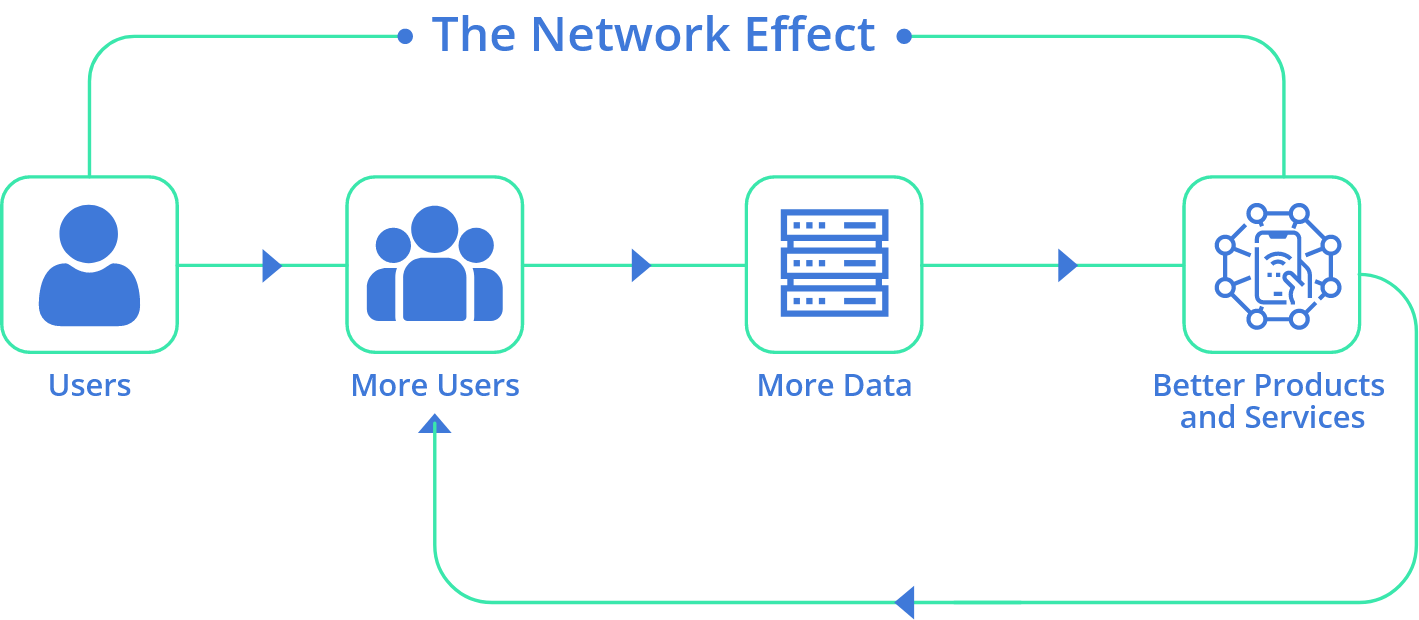Executive Summary
Even in the darkest nights of economic down turns, startups amaze us like auroras, the majestic, polar lights. They are the disruptors, who today, stand disrupted. Facing the double whammy of revenue drop and funding shortages, 40% of startups are in the red zone. Experts say and research points out that the difference in the performance of companies during and after the crisis, depends on how well they were prepared for it, and how they strategize for the future. In this paper, we have synthesized most significant research outcomes and interviewed experts to demystify the areas that need utmost attention and the strategic moves for long term sustenance.
In times like these, even startups have to start-over. Leadership changes, new models of data-driven decision making, the exercise of utmost discretion while cutting costs, visionary as well as imperative investment in technology, and branding efforts are the most vital areas which must be unshackled.
Also, while managing growth and such a volume of changes, entrepreneurs must ensure that the unique identity or spirit is not lost, as scaling is the most precarious phase of a startup's journey.
From innovation to culture, data is the enabler-in-chief. The advanced technologies have erased the old rules, and those who harness the power of data, AI, IoT, etc. are most likely to make the new ones. When in the wake of the impact of the pandemic, the global businesses are prioritizing digital transformation; startups must explore the technological hinterlands for competitive advantages. Our paper caters to the latest issues, challenges, and postulates a strategic blueprint for startups. To read the reflections of the world's most promising thought leaders, keep exploring!

The Esteemed Contributors
We thank each of the following experts who were interviewed for this paper. Our heart-felt gratitude towards them for giving their precious time and invaluable insights that have added immense value to the paper.
The global spending on technologies and services that facilitate digital transformation is expected to grow at an impressive CAGR of 17.1% to reach USD 2.3 trillion by 2023, according to the International Data Corporation (IDC), and the US would be the lead investor.

1
Denise Lee Yohn
A voice that counts. Denise is the world's leading Brand Leadership expert, best-selling author, an in-demand keynote presenter at conferences and corporate events for Facebook, Lexus, NFL, and more. She is a regular contributor to HBR and Forbes. Denise serves as a board member of San Diego Sport Innovators and the non-profit Plant with Purpose and many more.

2
Prof. Thomas H. Davenport
World's leading thought leader on AI and data analytics, best-selling author, president’s Distinguished Professor of Information Technology and Management at Babson College. Prof. Davenport is also a Fellow of the MIT Center for Digital Business, and an independent senior advisor to Deloitte Analytics.

3
Linda Grasso
She is a widely recognized digital transformation influencer. She features in the list “Women in Tech: Top 50 Women Influencers to Follow in 2020” by The Awards Magazine. She is the Chief Operating Officer at Digital Business Innovation Srl, and Industrial Engineer.

4
Roger Spitz is a futurist
He is the founder & CEO of Techistential, the global Foresight, Strategy & Futures Intelligence platform. Roger is also the Chairman of the Disruptive Futures Institute; he is a writer, speaker, and regular contributor to MIT Technology Review, and several institutions of repute.

5
Gianluca Ruggiero
World's leading thought leader on AI and data analytics, best-selling He is the founder & CEO of MASSIVE, a Consumer Reviews Analytics solutions company. Gianluca is an award-winning Marketing Strategist, Data Scientist, AI Designer, and Entrepreneur.

6
Costas Papaikonomou
He is Co-Founder at Happen® Group Part of Accenture, author-Thoughts From A Grumpy Innovator; winner of several pan-European design and engineering awards (iF, GIO, EEA). Costas has spearheaded projects across cultures and categories on all continents (including the Antarctic).
When Black Swan Disrupts the Disruptors
The COVID-19 black swan perhaps dwarfs all preceding ones, eclipsing the world into a phase of unparalleled economic and humanitarian uncertainty. Startups, the presumed crusaders of disruption, find themselves at loss with the omnipresent chaos.
They can survive the strong headwinds by making the right moves, not only for the present but their wagers on the future must also bear fruits.
In this paper we take economic upheavals as an integral part of the modern economy, and that strategic response to disruption holds the key to a brighter tomorrow. This paper investigates the effects of pandemic on the startup ecosystem, and has scrupulously fashioned strategies that might prove advantageous to the startups not only in pivoting through the crisis but also while scaling and maturing as an organization.
The Pandemic's Effect on Global Economy and Employment
According to the World Bank the global economy is expected to contract by 5.2%, and for the first time in living memory, the Asian economy will" contract (IMF estimates it to shrink by 1.6%).
The International Labor
Organization (ILO), estimates the COVID-19 crisis to wipe out 14% of working hours in Q2 2020, which is equivalent to the loss of 400 million full-time workers. The effect is especially acute in upper middle income countries.
ILO estimates1 that over 81% or 3.3 billion people are affected by complete or partial workplace closures. The rising unemployment has become a serious issue. In these critical times, when big organizations are or partial workplace closures. The rising unemployment has become a serious issue. In these critical times, when big organizations are struggling and laying-off employees, it is important to investigate the pandemic’s effect on the startup ecosystem as it holds the key to employment, as well as economic recovery.
Employment loss equal to 400 million jobs. 81% or 3.3 billion workers are impacted
Startup Ecosystem in 2020
The global startup economy is big, approximately $3 trillion in economic value. Unfortunately, during these challenging times startups face the two-fold ordeal of shrinking demand and drop in investments by VCs, ringing alarm bells for startups.
The two major startup ecosystem trends before the pandemic were the Explosive Penetration of Tech Economy and Shining Asia Pacific.
In 2013, when Aileen Lee coined the term Unicorn, there were only four ecosystems that produced technology unicorns or exits; in 2019, the number rose astonishingly to over 802 ecosystems that are producing unicorns. Also, with the rise of technology startups, Asia-Pacific now has improved from 20% to 30% of top global startup ecosystems.
Startups face Double Whammy of shrinking demand and drop in investments.
The Aftermath
An elaborate and extensive research report by Startup Genome, the Global Startup Ecosystem Report 2020 (GSER 2020) has encapsulated the effect.
-
Staggering Demand:
Almost three-fourths of startups have experienced revenue drops, averaging around a shrinkage of one-third. Unsurprisingly, the industries related to technology, especially advanced tech have experienced least drop in revenue. These industries include: Blockchain, Crypto, cybersecurity, Gaming, digital media, Bio-tech, Edu-tech, Fin-tech, AI and big data.
-
Dwindling Capital Stream and VC funding:
About 40% of startups are now in the red zone, with only 3 months of runway. India, where the lockdowns were the most severe, 9 out of 10 startups have experienced a decline in revenue, according to Nasscom3, and around 70% startups are in the red zone.
-
Funding Disruption:
Over three-quarter of startups have experienced funding disruption in the form of either denial, apathy, or delay. Using Crunchbase database, research4 by Itay Sagie, co-founder of VCforU.com, a lecturer and strategic adviser to startups and investors, discovers that there was a 44% fall in VC rounds from seed to Series B stages. AI startups saw significant rise in funding, while travel tanked.
-
Cost-Cutting:
Over 71% of startups have engaged in cost-cutting activities and on average have cut over 22% costs to survive, a combination of drop in expenditures, salary cuts, and layoffs. In the strategy chapter, we have explored the right ways in which costs must be cut else they may do more harm than good.
In toto, the circumstances are not rosy, as disruption transcends all. The strategic response to the pandemic, along with short and long term vision will be the determining factor that distin-

Source: VCforU analysis based on Crunchbase data
A Strategic Blueprint for Startup Sustenance and Scalability
Severe macroeconomic shocks are devastating for every company. Then why do some survive, some perish, and some thrive? The distinguishing factor is the difference in the level of preparedness and planning. In this section we delve into the factors and strategy that creates the difference between unicorns and the laggards.
However difficult life may seem, there is always something you can do, and succeed at. It matters that you don’t just give up.
- Stephen Hawking

Agile Decision Making-From Centralized/ Decentralized, to Data Driven.
In cognizance of the catastrophic effects of a crisis, companies must take the first step towards changing the way they make decisions. Research effort by Nicholas Bloom (Stanford University), et.al5, National Bureau of Economic Research (NBER), 2017, reveals the effect of organiz- -ation’s structure on firm’s ability to navigate the downturn. When dealing with crisis induced uncertainty, decentralized firms fared better than centralized peers because they were more aggressive in changing offerings, in experimentation and were able to adapt better
to change vis-à-vis centralized firms because empowered employees used local information to make well informed decisions.
Towards The New Normal: Data Driven Decision Making
The decision making paradox is that to be agile, decisions
need to be fast and participants should be minimum, but decisions are better with more stakeholders, on the other hand, their involvement reduces the speed. The solution to the paradox is Towardsdata driven decision making!
Data decisions transcend the old paradigm of organizational structure.
Data driven decisions transcend the old paradigm of Centralization Vs Decentralization by making information from every corner of the organization count at speed and scale. Startups must harness data through technology to facilitate greater transparency and increase the real-time awareness of the situation, especially during a crisis. They also need to develop a data driven culture that makes people more equipped to handle data and negates the subjectivity in decision making.
Without data, you're just another person with an opinion.
- W. Edwards Deming

Be Cost Conscious, Not Cost Centric
The knee-jerk reaction to the outbreak of a crisis is rapid and deep cost cutting, but more often than not, such impulsive steps do more harm than help the company. Around 71% of startups have cut near 22% cost, the emphasis is thus necessary. To cut cost around 34 million people were laid-off globally during 2007-2010, and 2.1 million6 lost jobs in 2009, in the USA alone. Are Lay-Offs Worthwhile?
When people leave, companies lose the time they invested in training them and their knowledge of operational culture as well as the nexus of relationships built over time. When the economy picks up again, recruitment and training of new people proves a costly affair. Also, nickel-and-dime mandates to cut costs by halting training and developments are also deeply damaging, because this is a time to upskill.
A study7 by Magnus Sverke and Johnny Hellgren found that after a layoff, survivors experienced a 41% decline in job satisfaction, a 36% decline in organizational commitment, and a 20% decline in job performance; all at a time when they could ill-afford it.
Apparently, there are better alternatives to layoffs such as furloughs, hour-reductions, performance pay etc. and companies pursuing these have been found to be more successful.
Research8 by Sandra J. Sucher, professor at Harvard Business School, and Shalene Gupta, reveals that layoffs are not just simple orga-nizational exercises. Her paper studied Honeywell’s layoff strategy. They laid off 20% of their workforce in 2000 and struggled to recover when the economy regained momentum.
They took a different approach to the 2008 crisis, and furloughed their people for just one-to-five weeks with unpaid or partially paid leaves. With this approach they saved approximately 20,000 jobs, and came out in a better shape. Nokia laid-off employees through the shutdown of its German plant in 2008, causing uproar that cost Nokia Euro 100 million.
Other researchers have found a significant benefit of the “short-time” approach, for every five workers on short-time work, one job was saved. Layoffs should be the last step, and for startups that are invariably bound by passion and connections, layoffs can be crippling.
Layoff Impact: 41% decline in job satisfaction, and a 20% decline in job performance.
Revitalize Brand Building
When the ominous knock of a recession is heard at the door, companies shift into panic mode. Branding and marketing endeavors/budgets are the first to get axed. Research expostulates the move to cut most marketing endeavors, as they are perilously parochial. Going dark during a downturn can push back the company by as much as 5 years. Startups must use their values, culture, customer service, partnerships
and community to do the advertising of their brands essence.
In an interview with Techment Technology, Denise Lee Yohn, the world's leading Brand Leadership expert, best-selling author, and contributor to HBR and Forbes, shared her message to startups on managing the present crisis.
This is a time for startups to move away from short-term sales and marketing to engage in value-driven brand building.
- Denise Lee Yohn

-
“During the COVID-19 crisis, one of the most short-sighted things startups and young organizations can do is to put a halt to their marketing and brand-building efforts. They must use this time to improve their brand presence among the customers. Their budgets can be small, but the messages can be big; showcase empathy and enduring values. Ensure that every touch-point, every activity reinforces, your brand positioning, and personality. Harness your energy to create a future-ready digital customer experience (CX) as the consumer behavior has undergone the digital paradigm shift." she said.
-
When asked about the suggestion she would like to give to startups, she said “This is a time for startups to move away from short-term sales and marketing to engage in value-driven brand building."
She evangelizes the concept of “Minimum Viable Brand” (MVB) for startups, with a framework with six elements that must be clearly understood and articulated for defining and developing a strong brand foundation.

Avoid High Competitive Risk of Not Investing in IT
In his extensive research article in MIT Sloan Management Review, “The Risk of Not Investing in a Recession”, Professor Pankaj Ghemawat, clearly elucidates the trade-off companies face: Financial Risk of Investing Vs Competitive Risk of Not Investing. His findings are clear, stark and alarming. He says that during normal times, the financial risk is perceived as low, while competitive risk of not investing is seen as high; both remain mutually complementary. But at the business cycle extremes, especially during bottom or economic downturns, the balance gets disturbed; companies exaggerate the financial
risk and underestimate the competitive risk of not investing. During the growth phase, startups are involved with so many urgent activities, they must consider a slowdown as a chance to invest in IT and derive vital competitive advantage from it, a luxury that would have been difficult to capture during the expansion phase.
Once-in-a-cycle misjudgements of this sort can create lasting competitive disadvantages, which may prove insurmountable.
Reassess Consumer Needs in Light of the New Normal
Justin Bell, President, Credera, and Forbes Council Member in his article “Three Innovation Mistakes To Avoid”9 expresses his surprise about how often organizations rely on assumptions about what customers want than on solid data findings. He prescribes a mix of qualitative (customer surveys, focus groups etc.) and quantitative (ethnographic) studies to create an accurate picture.
He recommends that this 360 view must be continuously mapped using a right mix of customer analytics tools across channels to harness right data. As the pandemic forces individuals and businesses to adapt to the new normal, reassessing consumer behaviour and consumer needs is a worthy exercise for any company.
Leadership During Uncertain Times: From Push to Pull
When a startup is small, personal connection and charisma of founders binds everyone together. But when everything around is transforming, leadership change has to be as radical. Uncertainty can be highly damaging, and leaders must Give a Map as it is essential for people to know that there is a plan which helps then manage uncertainty and be calm.
Leaders have to balance their styles, juggle betweenthe “push”: Tell, Direct, Delegate, and the “pull” approach: Empower, Collaborate, Coach. The balance is critical during the uncertain times as it has shown to create greater commitment and creativity in employees irrespective of age or company size. Jeffrey W. Hull, Ph.D., director of education and business development at the Institute of Coaching (a Harvard Medical School affiliate) prescribes how the balance can be achieved.
-
Align employee and business goals: When people feel that business goals are tied directly to their development, they are much more likely to go the extra mile.
-
Create feedback loops: More frequent weekly or bi-weekly meetings to ensure every voice is heard and everyone is on the same page, is a powerful tool.
-
Build peer-to-peer networks: Create cross-functional groups and teams which help people feel the same level of connection and belongingness when the organization was small, helps to keep it all together. A balanced approach is needed, one that pulls people to deliver more rather than unwittingly pushing them out the door.
Preserve the Startup Soul
Many see something in a startup, something intangible, ineffable, a special energy, a soul. Company founders feel its presence, and so do early employees and that is what makes them leave their cozy careers and dive into chaos to experience a deeper connection and greater purpose. So long as the spirit persists, startups remain vibrant, and innovative. Startups falter when the spirit begins to fade, everyone feels a sense of loss, something vita has disappeared.
An extensive research by Harvard professor Ranjay Ghulati, investigated these elements which constituted a startup’s soul and narrowed it down to three elements: Business Intent, Customer Connection, and Employee Experience.
Companies who do not lose the sight of these elements are able to thrive during the darkest of times, without an identity crisis.
The case of iconic companies such as Netflix, Nike, BlackRock, Warby Parker, Study Sapuri, and Starbucks, illuminate the fact that their expansion was aligned with their core business intent for which they remained rigid, but they were remarkably flexible otherwise. After a certain size, bureaucracy is essential but it does not need to destroy the spiritual trinity of business intent, customer connection, and employee experience.
Re-evaluate the Finance Mix
Had Amazon not received its funding of $ 681 million just a little early of the dot com bubble burst, it would be a different world today. Capital is critical for startups to survive and sustain because even growth requires investment and failing to amass it at the right time can spell doom. A prudent finance mix, with a wise proportion of debt, equity, other credit lines deserve commensurate attention.
Companies with high levels of debt are especially vulnerable during a recession, as revealed by the research10 published in The Quarterly Journal of Economics, Oxford, by Xavier Giroud, et al.
Majority of companies that shuttered during the great recession were highly lever aged. This is because to keep up with payments, they were forced to cut costs more aggressively than others, especially through layoffs. Deeper cuts impair productivity and ability to fund new investments.
The vital takeaway of the research is that firmsstartups and mature alike, must deleverage in cognisance of an impending recession. Strategy: reducing assets is a better way to deleverage than cutting core aspects of operations.
Strategy: reducing assets is a better way to deleverage than cutting core aspects of operations.
Technology Strategies for Startups During the Crisis
Soon, majority organizations would be digital, and it would no longer be a source of competitive advantage. The new normal requires to view technology from a renewed perspective. In this section we are highlighting some aspects that startups must consider to grow in the new normal:
Embrace and Invest in Data
Data was the New Oil, Now it's the New Business Model
Today, devices from watches to cars connect to the internet, the data volume is increasing. Every day we are creating 2.5 quintillion bytes of data. We have created in the past two years, 90% of the entire data
in the world11. Thanks to the
increasing penetration of the
internet and data capacity as
well as the meteoric rise of IoT devices, the digital world is exploding. According to Intel12, IoT devices have grown incredibly, from 2 billion devices in 2006 to an astounding 200 billion devices in 2020.
This abundance of data changes the nature of competition, GE and Siemens now sell themselves as data organizations.
Artificial-intelligence (AI) techniques such as ML are extracting more value from data. Algorithms can predict when a customer is ready to buy, a jet-engine needs servicing or a person is at risk of a disease.
Technology giants have always benefited from network effects: the more users Facebook signs up, it makes other users interested; more users create more data; which helps it to improve and get more users and the cycle goes on. The data Tesla gathers from its users, helps it improve its software. To compete with Tesla, auto giants need a shift towards data; that is the extent of change that has transpired. In the words of former Amazon executive John Rossman “Data is the business model”13.
Data is the business model

Cultivate the New Data Driven Culture
Data, the world's most precious resource, now sits at the heart of every thriving modern business. It is the enabler-in-chief, but unless organizational cultures change and accept data as a vital resource that needs to be leveraged, data per say wouldn't make a difference. We have investigated the new paradigm of data and interacted with leading experts in the field to map the emerging trend.
In a brief interaction with Techment Technology, Prof. Thomas H Davenport, world's leading thought leader on AI and data analytics, best-selling author, president’s Distinguished Professor of Information Technology and Management at Babson College, responded to an increasingly significant question of whether it is recommended and feasible for startups and
small businesses to deploy data analytics and AI and exploit its potential; the professor responded "It is more a question of exposure and awareness vis-a-vis of budget and capabilities. Startups must come up with ingenious applications and start developing a data-driven culture that will help them scale and be more agile in the growth phase as well as when they mature as an organization".
The recent developments and works of leading authorities like Prof. Davenport portent the dawn of a new culture, the data driven culture, and startups must work towards nurturing the data culture.
Startups must develop
data-driven culture.
- Prof. Davenport

Leverage the Lack of Legacy Systems
Unfortunately, it took a catastrophe to change the business outlook towards technology on a mass scale. Finally, IT and businesses are getting aligned. Worldwide DX technology investments between 2020-2023, would be over $7.4 trillion, according to IDC14. 2020 is an infle- ction point when the majority of firms would take serious steps to go digital. The success rates might improve as being digital dropped from being a privilege to being a threshold qualification and as there is greater acceptance today.
To disrupt, startups will have to be more tech-intensive as the pandemic has upped the ante.
In an interview with Techment Technology, Linda Grasso, a widely recognized digital transformation influencer and Chief Operating Officer at Digital Business Innovation Srl, shared her views on the subject of startups and how data, IoT, and the pandemic are changing the very nature of manufacturing.
Strategy: reducing assets is a better way to deleverage than cutting core aspects of operations.
-
“Startups represent a vulnerable section of the business ecosystem. They must leverage their agility (which comes with the lack of legacy systems) with extensive use of technology. Today, IoT and related technology investments are proving highly rewarding with fewer delays and down-time, process efficiency gains, preventive maintenance, better inventory management, increased safety, and lower energy consumption.”
-
She adds and elaborates further “Startups must leverage the remarkable rise of IoT and data to be the torchbearers of the change and lead the industry 4.0 ecosystem. Moreover, in the aftermath of the present global crisis, when organizations are aggressively targeting digital transformation, startups must use technological leaps and race ahead.” she expounded.
“Startups must leverage the remarkable rise of IoT and data to be the torchbearers of the change and lead the industry 4.0 ecosystem”
- Linda Grasso

Startups Must Harness AI
In 2019, in just five years Ant Financial Services Group breached 1 billion customer mark. It serves more than 10 times as many customers as the largest US bank, and with one-tenth the staff. Its last valuation was $ 150 bn, half that of JPMorgan Chase, the world’s most valuable
financial-services company. AI is very real and is a startup’s cup of tea. CXOs around the world are rightly haunted by the AI, Big data question. For every company and startup to varying degrees, it is an existential question. The AI efforts can be subsumed into three categories:
In a thought provoking research by Thomas H. Davenport and Rajeev Ronanki, Deloitte, studied 152 AI projects15 and bring significant findings to the fore. The research reveals that the most common form of AI projects undertaken are of the RPA category. The reason is simple, they are easy to execute, the benefits are quick to reap and tangible with high ROI. Though there is a serious limitation of only using RPA, and that is the opportunity cost of not exploiting AI’s full potential.
Ant Financial has 10 times more customers than largest US bank, with one-tenth staff.
AI Application for Startups & Young Organizations
The area in which AI should be applied today baffles chief executives around the world, and it's even more significant for startups with tight budgets to identify the areas. Extensive research at McKinsey Global Institute16 reveals that around 40% of value that analytics creates, comes AI’s “deep learning” technique.
2/3rd of the entire AI opportunity lies in two areas: Supply-Chain Management/Manufacturing: $1.2 Trillion $ 2 Trillion Potential Value Creation and Marketing and Sales: $ 1.4 Trillion $ 2.6 Trillion Potential Value Creation.
-
Top floor: Analytics, Decision Making
-
Shopfloor: Shop-Floor Analytics, IIOT, Smartplants, Robotics, 3D Printing, etc.
Segment wise AI Applications:
-
Front office: Natural Language Processing, Chat- bots, Analytics, Underwriting, Claims Management, Product Personalization, etc.
-
Back office: RPA: Robo-advisors, Accounting, Operations, Human Resources, and Procurement
In an extensive interview with Techment Technology Inc., Gianluca Ruggiero, founder & CEO of MASSIVE, a Consumer Reviews Analytics solutions company, gave detailed insights into the challenges and opportunities of AI and data analytics for startups.
-
On the question of whether startups should develop internal AI capabilities or get external services, he says, “If it is possible companies should do it internally because it is strategic. But if the availability of resources is scarce, they should go into a long term partnership with a genuine AI company.”
The ideal way would be to start early and slowly build business and processes around AI.
- Gianluca Ruggiero

-
Speaking of challenges surrounding AI, and whether startups must begin early, Mr. Gianluca explained that “For AI to be successful, it has to be central or at the core of the company, it can’t be a mere function of it. The larger the organization becomes, the more difficult it is to rebuild systems and train AI. The ideal way would be to start early and slowly build business and processes around AI,” he said.
-
On the issues of driving decisions with Big data and AI, he cautioned“While driving decisions based on AI and big data, companies must be aware of the risk of using biased or inaccurate data, as data quality is what matters the most in AI. For this reason, they need to know very well the nature of the data they are processing. If digital data scraping is involved, the problem of data quality is even more significant.
For critical decisions, they must go for deep scraping technology. It is a little expensive, but that is the cost of accuracy.”
-
Mr. Gianluca, on the question of how to begin with AI, proposed a simple step, “RPA can be the first logical step. Because it is simple and requires minimal training, but helps start the process of shifting to AI. Visible results encourage everyone to have more of the tech pie. Incorporating AI into RPA could be the next.” he proposed.
The secret of change is to focus all of your energy, not on fighting the old, but on building the new.
- Socrates

Innovation Led Recovery
Today, startups have become the cradle of innovation, so much so that strategists or innovation experts recommend the companies tie up with startups to foster innovation. Thus, many large corporations have adopted the policy of acquiring startups as an alternative to innovating themselves.
Nonetheless, the question of innovation remains ubiquitously mysterious to the young and the old corporations alike. By conversing with various innovation experts and through the findings of major research endeavors, we have tried to demystify the core issues, and coded strategies that would facilitate innovation during the crisis.
4 strategic ideas that can help startups to fast-track innovation

Rekindle and Revitalize Innovations during the Pandemic
Below are a few tactical and strategic ideas that can help startups to fast-track innovation during these challenging times.
-
Pivoting to Success During Uncertain Times
In a BCG interview, Steve Blank puts17 it asa company's survival in a downturn can be captured by a very simple formula. “Survival is the product of your speed of understanding the situation, the magnitude of the pivots that you make, and the speed with which you’re willing to make the required changes.”
Speed means ability to curtail costs and expenses, when revenue falls. When demand picks up, how quickly can a company recover in the areas that people are beginning to buy, or come out to shop. Companies must run experiments without veering the company entirely. Rapid pivoting or changing allows the opportunity to lead rather than follow. During uncertain times, the good news is, no one knows the answer yet and even better news is your startup could be the first one to find out!
-
Radical Vs Incremental Innovation
Drive innovation through emotional analytics.
- Costas Papaikonomou

Innovation does not necessarily be radical, the boat need not be frequently rocked. Startups must feel the pulse of their customers and decide. In an interview with Techment technology, Costas Papaikonomou, co-founder at Happen® group part of Accenture, shared a innovation outlook,
-
On the above issue, he said “If the startup is doing good, and the profits are testifying their growth, there is no need to change the winning formula; focus on innovation efforts outside of the core. But if business is tanking, then innovate the core.”
-
He spoke of the change in offerings startups need to look at, “Though specific strategies would vary across industries, the essence is that disruption or a crisis creates new needs and challenges. Startups that bring in ingenious solutions, address new problems for their clients, will have more chances of success. Any startup that adopts a wait-and-watch approach and assumes that the pre-covid client will return, is fooling itself.” he cautioned.
-
Innovation Through Emotional Analytics
One of the main factors that advocate Zero-Day digital startups is the power companies can derive out of big data. Yes, innovation driven by big data analytics of human emotions!
Responding to emotions is one of the most effective ways to grab the attention and loyalty of consumers. Millions of dollars are being poured by the silicon valley into emotional analytics, and the analysis of online conversations is proving to be rewarding.
Speaking with Techment, Costas Papaikonomou, co-founder, Happen, explained his company's motivation to build technology frameworks and tools such as StarMakerTM, F.I.R.E.®, Asset-OutTM and Vision-LedTM, which identify emotions to feel the pulse of customers at scale. “At Happen, we drive innovation with the help of emotional analytics. We create a bespoke data universe which is relevant to the business and allows the study of unprovoked emotions. Our tool, StarMaker, allows firms to estimate in two-three weeks what took years of segmentation to achieve. So with big data applied right, you can listen to millions of people instead of interacting with a dozen. Startups and other organizations can analyze emerging and changing needs to drive innovation with great agility.” he explained. Indeed, the world is changing and startups must exhibit hyper agility with advanced tech tools.
Netflix has been doing that, the famous show “House of Cards” was motivated by data.
-
Israel’s Chutzpah, Long-term View & Cross-Pollination of Ideas
In an interview with Techment Technology, Roger Spitz, founder of Techistential, writer, speaker and a contributor to MIT Technology Review, and several institutions of repute shared his insights, drawing from his extensive and first-hand experience of the Silicon Valley and Israeli startup ecosystem, on the “secret sauce” of innovation for startups.
-
“There is a lot of learning that can be drawn for Israel’s approach to innovation. Startups need to embrace “chutzpah” to have the audacity to break the rules and believe that you can achieve miracles. This involves experimentation and accepting failure as a way to learn. Even though faced with a constant existential threat, whether Israel itself or its startups, a long-term view of innovation is adopted and I feel that it is critical for startups to have a long-term perspective and develop greater comfort with ambiguity and uncertainty.” he said.
-
Responding to the question on organization structure’s role in promoting or hindering innovation he elucidated“Like Israel, startups growing in size must ensure they bridge the silos by allowing an interdisciplinary approach: multi-tasking and coupling deep specialization with T-shaped profiles to facilitate cross-pollination of ideas.”
I feel that it is critical for startups to have a long-term perspective and develop greater comfort with ambiguity and uncertainty.
- Roger Spitz

Out of the Economic Chaos, Valuable Startups are Born
Half of the present fortune 500 companies were incorporated during economic downturns. It is in the crucible of conducive ecosystems that successful startups and unicorns are born. The creation of such ecosystems that help startups scale and sustain, create employment and economic growth, is paramount for every economy.
Startups catapult us, in quantum leaps, into the future. Startups are the cornucopia of innovation and hope. Though black swans disrupt human life and economy, it is through the startups that even in the most adversarial condition, the human ingenuity finds a voice and purpose.
Today, for most startups, revenues are falling, and funding lands are parched, while disruption is all-pervasive. It is a test of creativity with which startups continue to build their brands, revitalize their culture, and out of the meager resources invest in technology and systems that make them more nimble and agile, not only for triumphing the present crisis but also in being prepared for others to come.
Businesses, big and small, young and old, have woken up to the significance of being digital. Big Data, Analytics, Cloud, AI, and IoT have made measurable strides in changing the rules and tools of the game. Startups must get further along the technological curve to become the “Hyper-agile” next-gen firms.
Reference:
-
https://www.ilo.org/global/about-the-ilo/newsroom/news/WCMS_740893/lang--en/index.htm
-
Source: Startupgenome; the Global Startup Ecosystem Report 2020 (GSER 2020)
-
https://news.crunchbase.com/news/how-covid-19-changed-the-vc-investment-landscape-in-the-us/
-
Aghion, Philippe and Bloom, Nicholas and Lucking, Brian and Sadun, Raffaella and Van Reenen, John, Turbulence, Firm Decentralization and Growth in Bad Times (April 2017). NBER Working Paper No. w23354. Available at SSRN: https://ss- rn.com/abstract=2961079
-
Global Employment Trends, January 2009, International Labour Organization report
-
Hellgren, Johnny & Naswall, Katharina & Sverke, Magnus. (2005). There's more to the picture than meets the eye: A comparison of downsizing survivors with changed and unchanged job content. South African Journal of Industrial Psychol- ogy. 31. 10.4102/sajip.v31i4.216.
-
Sandra J. Sucher, Shalene Gupta, Layoffs That Don’t Break Your Company, Harvard Business Review, May–June 2018 Issue
-
Global Employment Trends, January 2009, International Labour Organization report
-
Xavier Giroud, Holger M. Mueller, Firm Leverage, Consumer Demand, and Employment Losses During the Great Recession, The Quarterly Journal of Economics, Volume 132, Issue 1, February 2017, Pages 271–316, https://doi.org/10.1093/qje/q- jw035
-
https://www.domo.com/learn/data-never-sleeps-5?aid=ogsm072517_1&sf100871281=1
-
https://www.intel.com/content/dam/www/public/us/en/images/iot/guide-to-iot-infographic.png
-
https://www.domo.com/learn/data-never-sleeps-5?aid=ogsm072517_1&sf100871281=1
-
Excerpt: Too Smart: How Digital Capitalism is Extracting Data, Controlling Our Lives, and Taking Over the World (The MIT Press), Jathan Sadowski
-
Artificial Intelligence for the Real World; Thomas H. Davenport and Rajeev Ronanki, Deloitte 2017
-
Notes from the AI frontier: Applications and value of deep learning, By Michael Chui, James Manyika, Mehdi Miremadi, Nicolaus Henke, Rita Chung, Pieter Nel, and Sankalp Malhotra, McKinsey Global Institute, 2018
-
https://bcghendersoninstitute.com/the-art-of-innovation-a-conversation-with-steve-blank-40b48bba05d8